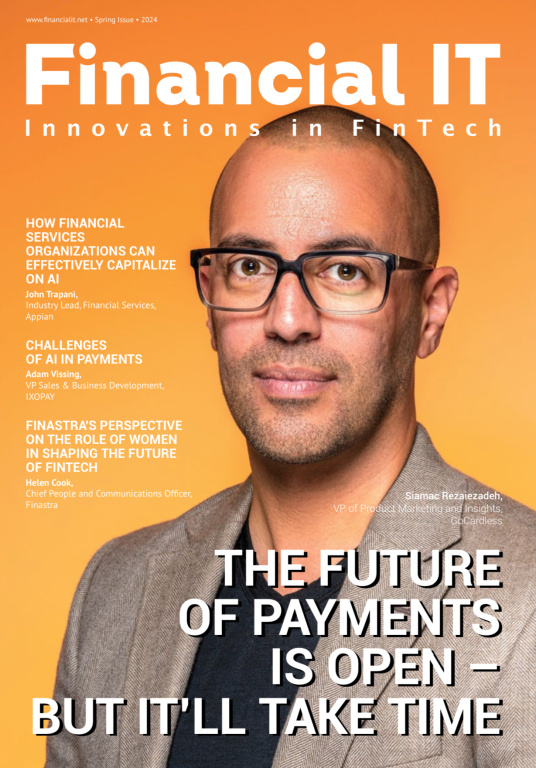Keeping Customer Confidence with Analytics

- Ritu Jain, Director, Industry Marketing at Alteryx
- 08.02.2016 10:30 am undisclosed
Today’s banker-bashing culture may be in transition, depending on whether the reforms put in place by government, regulators and the Bank of England will be able to change the public’s opinion of banks. Whatever the impact of these new rules, their main purpose is to prevent another cataclysm, not to repair the relationship between banks and their customers.
Is it possible to transform the image of banks into a valued part of society? It’s a possibility, but the industry doesn’t exist to win popularity. It’s much more important for it to restore the trust the banks used to have when the local bank manager was considered a key pillar of society. The best way for banks to become trusted is not by being liked, but by being reliable.
Take a leaf out of retailers’ books
The rapid growth of omnichannel retail has proven the value of treating customers as individuals. Retailers are continuing to recognise the benefits of personalised communications and promotions which go a long way to boost customer engagement and loyalty. Banks are not isolated from the trend. Just as retail shoppers do, banking customers have high expectations from their financial services providers. They’re looking for a tailored, consistent experience from their bank which moves with them between channels and products.
The retail industry has demonstrated just how important personalisation is to building a feeling of care among customers, along with the confidence that they are being listened to. To achieve this, banks must recognise the changing habits and preferences of the banking population and adjust their product and service mix to meet consumers’ needs. It’s essential they respond to increasing demand for convenience by adjusting distribution channels and offering mobile banking, while remaining relevant to varying demographics. This requires far more than a change in attitude. It demands a revolution in the way banks use their data to inform decision making.
When used effectively, data can help pinpoint market trends, predict demand, and assess risk that can translate into an improved offering and service. One large financial services institution is leading the way by blending five billion rows of customer and transaction data across multiple product lines to identify and retain at-risk customers, improve contact centre agent behaviour and optimise its distribution network. This results in reduced costs, improved convenience and a better customer experience.
Protect and perfect
Banks are extremely protective about the data they hold, to the extent that data usage is restricted to the line of business for which the data is collected. Sharing across departments is limited if not absent altogether. Whilst this caution is understandable, it makes it impossible to glean a complete picture of all customer interactions. Further, with IT controlling access to data, line of business users often don’t have relevant information in time to offer better, more personalised services and promotions. Banks must realise that data is not there just to protect, but to use.
Beyond data protectiveness, banks are being further held back by the complexity of their legacy IT infrastructure. The traditional banking IT infrastructure comprises a series of incompatible systems siloed by lines-of-business or product line, making it extremely difficult and time-consuming to extract data and insight. Employing armies of IT staff, banks have been able to gain insights for a few select initiatives but that has come at a high operating cost, preventing them from achieving widespread data-driven decision making goals.
Deriving data value
While breaking down siloes and connecting data within may seem like a big obstacle, there are analytical tools that banks can use to empower business analysts. Tools which let them access, blend and analyse data from multiple systems and sources to uncover hidden insights without relying on IT specialists or programmers.
Empowering business users with data analytics is the only way banks can start providing more tailored, engaging experiences based on a multi-dimensional view of each customer. And the benefits won’t just begin and end with just the customer. Access to sophisticated, user-friendly self-service data analytics capabilities will also deliver untold benefits for risk management and compliance, enabling banks to assess and optimise risk exposure across business units. A good example is a large multi-national financial services institution that is using Alteryx to forecast near term demand for derivatives to comply with the Volker Rule - which puts restrictions on banks from making certain types of speculative investments that contributed to the 2008 global financial crisis. By using Alteryx the bank has succeeded in analysing data and adjusting investment positions in a fraction of the time it would have otherwise taken.
Banks can spend millions of pounds on marketing campaigns to try to paint themselves as friendly and approachable, but if they want to win over a sceptical public they need to demonstrate why they can be trusted. They already have one part of the puzzle, the vast volumes of data. All they need is the analytical tools that empower their line-of-business analysts to effectively master the data and put it to use and to change the way they are seen by customers and regulators.





















